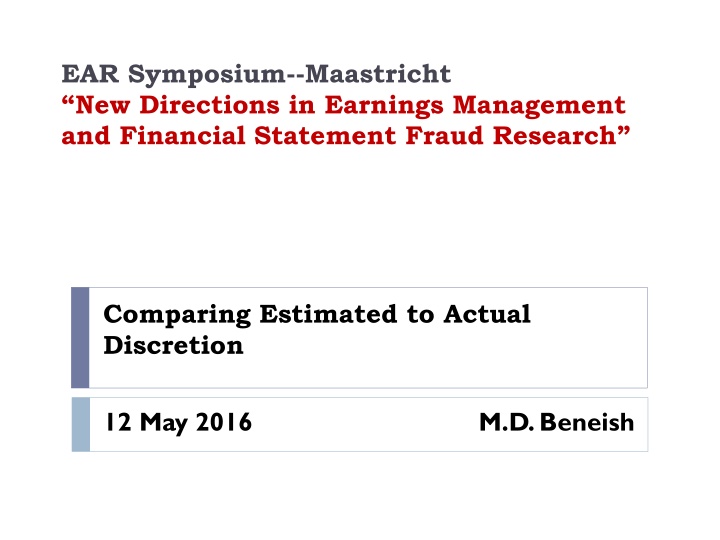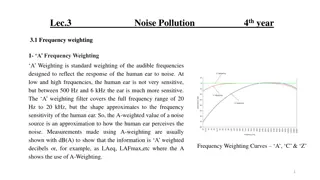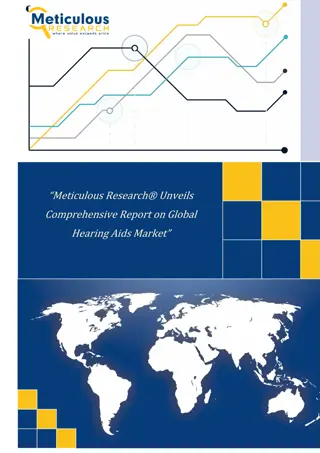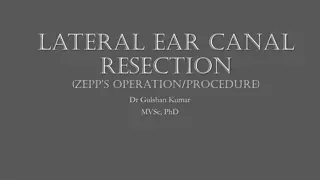
New Directions in Earnings Management Research
Explore the complexities of estimating managerial discretion over financial reporting and the implications of accrual-based discretion estimates in detecting earnings management and financial statement fraud. The research highlights the challenges in validating estimates, the magnitude of discretionary accruals, and the discrepancies between actual and estimated discretion. Recommendations for future research are discussed, providing valuable insights into evolving research methodologies in this field.
Download Presentation

Please find below an Image/Link to download the presentation.
The content on the website is provided AS IS for your information and personal use only. It may not be sold, licensed, or shared on other websites without obtaining consent from the author. If you encounter any issues during the download, it is possible that the publisher has removed the file from their server.
You are allowed to download the files provided on this website for personal or commercial use, subject to the condition that they are used lawfully. All files are the property of their respective owners.
The content on the website is provided AS IS for your information and personal use only. It may not be sold, licensed, or shared on other websites without obtaining consent from the author.
E N D
Presentation Transcript
EAR Symposium--Maastricht New Directions in Earnings Management and Financial Statement Fraud Research Comparing Estimated to Actual Discretion 12 May 2016 M.D. Beneish
Agenda Why validate estimates of discretion? Accrual-based estimates of discretion. Examples of Actual v. Estimated Discretion Some research suggestions. 2 M.D. Beneish 2016
Why validate? Accrual expectation models have low R2, are mis- specified, incomplete, and yield highly imprecise estimates of discretion (Guay, et al. 1996, Thomas and Zhang 1998, Ball 2013). Neither the form nor the extent of managers' discretion over financial reporting are known (Beneish, 1998). Of course earnings management goes on . But whether the typical research paper in this dismally unscientific literature has come even remotely close to reliably documenting earnings management is another matter entirely. (Ball 2013) The magnitude of some reported discretionary accrual estimates defies imagination (Ball 2013). 3 M.D. Beneish 2016
Why validate? Magnitude of estimates not credible. Discretionary accrual estimates larger than 15% in absolute value 20% to 33% of the time for U.S. and E.U. firms over the past 25 years. Given these estimates are as a % of assets, ROA is frequently misstated by +/-15%. This implies: (1) that managers frequently have enough discretion to inflate (deflate) income by an amount exceeding15% of the firms assets. Even with lots of reserves that seems unlikely. (2) Considering that the ROAs of most firms are in the range of 4% - 8%, that managers can overstate (understate) ROA by more than 100% in one out of five (or one out of three firms). 4 M.D. Beneish 2016
Accrual Estimates of Managerial Discretion over Financial Reporting I computed one-year-ahead residuals for the Jones (1991) model, the Dechow, Sloan and Sweeney (1995) and the Beneish (1998) modifications of the Jones model, as well as performance-matched versions of these computations following Kothari, Leone, and Wasley (2005)-See Appendix. Models estimated cross-sectionally by Industry (FF48)/year. Separately for U.S. firms and E.U. firms. Computations of accrual estimates for firms with actual fraud case(s) you are studying, follow either of the links below: http://kelley.iu.edu/dbeneish/activities/index.html https://apps.kelley.iu.edu/Beneish/DataSearch/DataSear ch/SearchCriteria 5 M.D. Beneish 2016
https://apps.kelley.iu.edu/Beneish/DataSe arch/DataSearch/SearchCriteria 6 M.D. Beneish 2016
Accrual Estimates of Managerial Discretion over Financial Reporting Example of Output 80,000 + U.S. annual observations from 1989 to 2011 44,000 + E.U. annual observations from 1999 to 2012 New Search Firm Name ISIN Year End Date (YYYY) Fama-French Industry Country Accruals ANDRITZ AG AT0000730007 2012 21 Austria Income Statement Total (TA) Current (CA) Performance Matched Accruals -0.023061509 -0.010794672 Performance-Matched Total Performance-Matched Current Jones Model Abnormal Accruals -0.003152636 -0.005216563 Total Current Performance-Matched Total Performance-Matched Current Modified Jones (DSS) Model Abnormal Accruals -0.009437377 -0.01114569 -0.005078282 -0.005428964 Total Current Performance-Matched Total Performance-Matched Current Modified Jones (Beneish) Model Abnormal Accruals -0.006307611 -0.006785186 -0.002919664 -0.00382811 Total Current Performance-Matched Total Performance-Matched Current -0.007271902 -0.008131612 -0.004958726 -0.005290385 7 M.D. Beneish 2016
Examples of Actual v. Estimated Discretion Sunbeam 1996 (Understatement) Sunbeam 1997(Overstatement) American Italian Pasta Co. 2003 (Overstatement) Elmos Semiconductor Aktiengesellschaft 2008 (Overstatement) PUMA S E 2009 (Overstatement) 8 M.D. Beneish 2016
Sunbeam 1996 ROA understated by 240bp Actual (red) vs. Estimated Discretion (Blue) as % of Assets (Sunbeam takes Big Bath in 1996: ROA Understated by 2.4% of Assets 0.150 Smallest prediction error 0.100 0.091 0.090 0.090 0.048 0.050 0.000 Current Accruals Jones MJ (DSS) MJ (Beneish) PM-Current PM_Jones PM_MJ (DSS) PM_MJ (Beneish) -0.024 -0.024 -0.024 -0.024 -0.024 -0.024 -0.024 -0.024 -0.050 Accruals and expectation model residuals overestimate discretion. More likely to reject an income-reducing EM prediction. -0.048 -0.055 -0.056 Performance-matched variants models overestimate discretion. More likely to support an income-reducing EM prediction. -0.100 -0.120 -0.150 9 M.D. Beneish 2016
Sunbeam 1997 ROA overstated by 660bp Actual (red) vs. Estimated Discretion (Blue) as % of Assets (Sunbeam takes Big Bath in 1997: ROA Overstated by 6.6% of Assets 0.500 0.455 All expectation model residuals overestimate discretion. More likely to reject an income- increasing prediction. 0.400 0.383 0.325 Smallest prediction error 0.300 0.200 0.125 0.122 0.121 0.087 0.100 0.066 0.066 0.066 0.066 0.066 0.066 0.066 0.066 0.000 Total Accruals Jones MJ (DSS) MJ (Beneish) PM-Total PM_Jones PM_MJ (DSS) PM_MJ (Beneish) -0.011 10 M.D. Beneish 2016 -0.100
American Italian Pasta Co. 2003 ROA overstated by 280bp Actual (red) vs. Estimated Discretion (Blue) as % of Assets (AIPC 2003: ROA Overstated by 2.8% of Assets Smallest prediction error 0.1000 0.0834 0.0766 0.0800 0.0736 0.0705 0.0600 0.0400 0.0284 0.0284 0.0284 0.0284 0.0284 0.0284 0.0284 0.0284 0.0274 0.0264 0.0261 0.0200 0.0000 Total Accruals Jones MJ (DSS) MJ (Beneish) PM-Total PM_Jones PM_MJ (DSS) PM_MJ (Beneish) -0.0200 Performance-matched variants overestimate discretion. More likely to support an income-increasing prediction. -0.0182 -0.0400 11 M.D. Beneish 2016
ELMOS SEMICONDUCTOR AKTIENGESELLSCHAFT ROA overstated by 192bp in 2008 Actual (red) vs. Estimated Discretion (Blue) as % of Assets (ELMOS SEMICONDUCTOR AKTIENGESELLSCHAFT 2008: ROA overstated by 1.92% of Assets) 0.2500 Accruals and expectation model residuals underestimate discretion. More likely to support an income-decreasing EM prediction. 0.2000 0.1886 0.1616 0.1608 0.1522 0.1500 Smallest prediction error 0.1000 0.0500 0.0192 0.0192 0.0192 0.0192 0.0192 0.0192 0.0192 0.0192 0.0000 Total Accruals Jones MJ (DSS) MJ (Beneish) PM-Total PM_Jones PM_MJ (DSS) PM_MJ (Beneish) -0.0160 Performance-matched variants overestimate discretion. More likely to support an income-increasing prediction. -0.0500 -0.0495 -0.0721 -0.0771 -0.1000 12 M.D. Beneish 2016
PUMA S E 2009 ROA overstated by 248bp Performance-matched variants overestimate discretion. More likely to support an income-increasing prediction. Actual (red) vs. Estimated Discretion (Blue) as % of Assets (PUMA S E in 2009: ROA Overstated by 2.5% of Assets Accrual and model residuals underestimate discretion. More likely to support an income-decreasing prediction. 0.1000 0.0751 0.0800 0.0743 0.0740 0.0732 0.0600 0.0400 0.0248 0.0248 0.0248 0.0248 0.0248 0.0248 0.0248 0.0248 0.0200 0.0000 Current Accruals Jones MJ (DSS) MJ (Beneish) PM-Current PM_Jones PM_MJ (DSS) PM_MJ (Beneish) -0.0200 -0.0400 Smallest prediction error -0.0600 -0.0700 -0.0703 -0.0705 -0.0705 -0.0800 13 M.D. Beneish 2016
Recap Firm Type Best Predictor Actual Estimated Error % Sumbeam 1996 Understatement PM_MJ (DSS) -2.40% -4.80% 50% Sumbeam 1997 Overstatement Total Accruals 6.60% 8.70% 24% AIPC 2003 Overstatement MJ (Beneish) 2.84% 2.74% -4% ELMO 2008 Overstatement Jones 1.92% -1.60% 220% PUMA 2009 Overstatement PM_Current 2.48% 7.32% 66% Best model varies (5 examples, 5 different models: two are performance-matched, two are not, and one is simply raw total accruals) Error rates are large (median=50%), but direction of actual and estimated discretion is the same (4 out of 5) 14 M.D. Beneish 2016
Some Questions Horse races are not overly informative. Much to be learned about nature and extent of discretion. Investigate details of actual discretion: When and why do models succeed or fail in generating a proxy that approximates actual discretion? In fraud cases involving multi-year misstatements, Is the first misstatement the most salient? Are subsequent misstatements just maintenance ? When do reversals occur? How does the timing of discretion in multi-year cases affect the performance of expectation models? Should we limit inferences to the direction of discretion? Do we stand a chance on the magnitude of discretion? 15 M.D. Beneish 2016
Appendix: Definitions of Accruals 1. From Income and CFlow Statements Following Beneish, Lee and Nichols (2013), Total Accruals = (IBX -CFO)/ Average Total Assets Current Accruals= (IBX-CFO+DEP)/ TAt-1 2. From the statement of Cash Flows Following Collins and Hribar (2002), we measure accruals (deflated by average total assets) as follows: Total Accruals = - ( AR+ INV+ AP + TAX + OTH +DEP)/Total Assetst-1 Current Accruals = (Total Accruals + DEP)Total Assetst-1 16 M.D. Beneish 2016
Jones model Premise: Accruals likely result from the exercise of managerial discretion and from changes in the firm's economic conditions. Accruals it = a1i + b1i Salesit + c1i PPEit + u1it (A.1) Two assumptions: (i) working capital accruals resulting from changes in the firm's economic environment are related to changes in sales, or sales growth, (ii) gross property, plant and equipment controls for the portion of total accruals related to non-discretionary depreciation expense. Current accruals Jones model: CAccit = a2i + b2i Salesit + u2it (A.2) 17 M.D. Beneish 2016
Modifications of the Jones Model Dechow et al. (1995): The modification only pertains to the computation of predicted accruals. That is, Dechow et al. (1995) use the Jones model in the estimation period, and make a receivable adjustment in the prediction period to recognize that sales growth may be partly due to management exercising discretion over sales. Thus, for example, predicted total accruals under the Dechow et al. (1995) modification are given by: Predicted Accrualsit+1 = a-hat1i + b-hat1i ( Salesit - Receivablesit) + c-hat1i PPEit + u3i (A.3) where -hat indicates estimates from (A.1) for firm i s industry at time t. Note that since the modification is only made for prediction purposes, it is statistically inaccurate in that it uses a different model to estimate than to predict. This is why many also estimate the model after making the adjustment to change in sales. 18 M.D. Beneish 2016
Modifications of the Jones Model Beneish (1998) replaces change in sales by change in cash sales. Cash sales growth is an alternative construct that deals with the endogeneity problem and plays the same role as sales growth in explaining changes in working capital accounts. In their total accrual form, the models are given by: Accrualsit = a2i + b2i Cash Salesit + c2i PPEit + u3it (A.4) 19 M.D. Beneish 2016
Performance-matching Kothari et al. (2005) adjust both accruals and abnormal accruals from the above three models by computing performance-matched abnormal accruals. Specifically, for each sample firm, we identify a performance- matched firm based on industry membership, period, and lagged ROA. I estimate performance-matched abnormal accruals as the difference between various accrual metrics for treatment and control firms. Thus, performance-matched unexpected or abnormal accruals can be computed as PMUXit=Abnormal accrualsit-Abnormal Accrualsjt Where abnormal accruals could be drawn from any of the models above, i represents the firm of interest, and j the matched firm based on industry membership, period, and lagged ROA. (A.5) 20 M.D. Beneish 2016






















